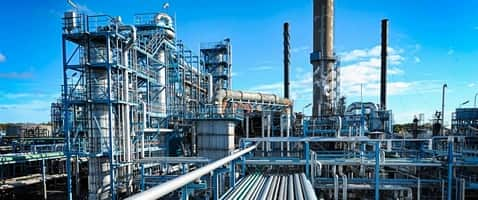Our process intensification techniques provide multiple options to enhance the operation of light naphtha isomerization units :
Improve feed specifications by debottlenecking upstream naphtha splitter
The Naphtha splitter column prepares feed for a light naphtha isomerization unit. In a typical revamp, improved product specifications and throughput increase is achieved by change of conventional internals to high capacity trays or packing. The revamp of naphtha splitter to a dividing wall column provides more than 40% capacity increase over that achieved by use of high capacity internals.
DWC Prime Video
Boost Octane of light naphtha isomerization units without the requirement of any new columns
Our enhanced distillation techniques boost the octane of isomerization units. An isomerization process converts low octane straight chain hydrocarbons to high octane branched chain isomers. Since the isomerization reactions are in equilibrium, the product octane is defined by the number of separation units in the process.
A typical light naphtha isomerization unit with a deisohexanizer (DIH) column can produce an isomerate product of RON 87-88. For further increase in RON additional deisopentanizer (DIP) and depentanizer (DP) columns are required. DWC Prime retrofits in existing DIH column and provides it with an additional functionality of a DIP or a DP column.
Increase capacity and produce C6 products in light naphtha isomerization units
Typical isomerization units have deisohexanizer column (DIH column) that separates light and heavy isomerate along with a side cut recycle stream to the isomerization reactor. The DIH column can be revamped to DWC prime which produces an additional 4th cut of C6 products (Food Grade Hexane/ Polymer grade hexane/ Isohexane / Special boiling point solvents). This revamp not only increases the profitability of Isom unit, but also increases the capacity of Isom unit by more than 20%.
Typical revamp payback is 2-12 months. Read more..








